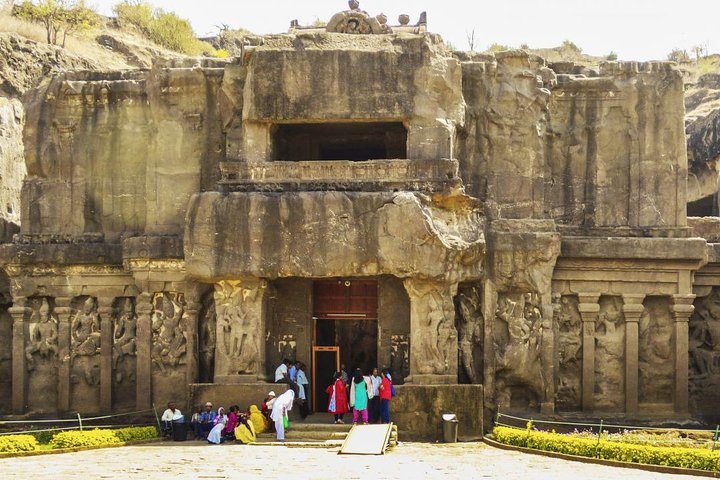Unveiling the Mysteries of Ajanta and Ellora: A Cultural Odyssey
Drawn by the allure of ancient artistry and spiritual heritage, I embarked on a journey to explore the Ajanta and Ellora Caves. This two-day adventure promised a deep dive into the rich tapestry of India’s cultural history, and I was eager to immerse myself in the stories etched into the rock.
A Journey Through Time: The Ajanta Caves
As I embarked on my journey to the Ajanta Caves, I was filled with a sense of anticipation and reverence. The drive from Aurangabad to the caves was a scenic one, with the landscape gradually transforming from urban sprawl to the serene countryside. Upon arrival, I was greeted by the sight of the majestic granite hills, which seemed to guard the secrets of the ancient world within their embrace.
The Ajanta Caves, carved into the horseshoe-shaped cliffside, are a testament to the ingenuity and devotion of the Buddhist monks who once called this place home. As I wandered through the 29 caves, I was struck by the intricate frescoes and sculptures that adorned the walls. Each painting told a story, a glimpse into the lives and beliefs of a bygone era. The vibrant colors and delicate brushwork were a reminder of the rich cultural heritage that has been preserved through the ages.
The experience was both humbling and enlightening, as I reflected on the dedication and craftsmanship that went into creating these masterpieces. The Ajanta Caves are not just a historical site; they are a living testament to the enduring spirit of human creativity and faith.
The Marvel of Ellora: A Fusion of Faiths
The second day of my exploration took me to the Ellora Caves, a site that showcases the harmonious coexistence of different religious traditions. As I approached the caves, I was immediately drawn to the grandeur of the Kailasa Temple, a monolithic structure dedicated to Lord Shiva. The temple, carved from a single rock, is a marvel of engineering and artistry.
Walking through the 34 caves at Ellora, I was captivated by the diversity of the carvings, which included Buddhist, Hindu, and Jain influences. The life-size elephant sculptures and intricate reliefs were a testament to the skill and vision of the artisans who created them. Each cave offered a unique perspective on the spiritual and cultural landscape of ancient India.
The Ellora Caves are a celebration of the rich tapestry of beliefs that have shaped the region’s history. As I explored the site, I was reminded of the importance of preserving and honoring our shared cultural heritage.
Aurangabad: A City of Contrasts
Returning to Aurangabad, I took the opportunity to explore the city’s historical landmarks. The Daulatabad Fort, with its formidable defenses and strategic location, offered a glimpse into the region’s tumultuous past. As I climbed the steep steps to the top, I was rewarded with panoramic views of the surrounding landscape, a reminder of the fort’s significance in the annals of history.
The Bibi Ka Maqbara, often referred to as the “Taj of the Deccan,” was another highlight of my visit. The mausoleum, built in memory of Emperor Aurangzeb’s wife, is a stunning example of Mughal architecture. The intricate marble inlay work and the serene gardens surrounding the monument provided a tranquil setting for reflection.
My journey through Ajanta, Ellora, and Aurangabad was a profound experience, one that deepened my appreciation for the rich cultural heritage of India. The sites I visited are not just relics of the past; they are vibrant reminders of the enduring legacy of human creativity and faith. I left with a renewed sense of wonder and a desire to continue exploring the diverse cultures and traditions that make our world so beautifully complex.













































